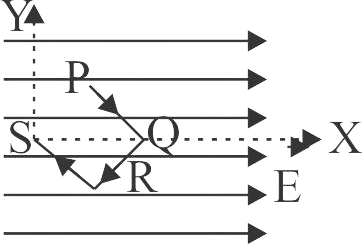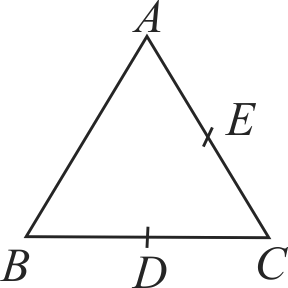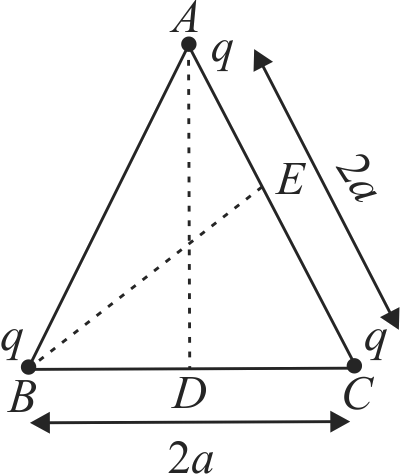359478
A point charge \(q\) moves from point \(P\) to point \(S\) along the path \(PQRS\). In a uniform electric field \(E\) pointing parallel to the positive direction of the \(X\)-axis. The coordinates of points \(P\),\(Q\),\(R\) and \(S\) are \((a,b,0),(2a,0,0)(a, - b,0)\& (0,0,0)\) respectively. Find the work done by the field in the above process
359481
Three charges, each \(+q\), are placed at the corners of an isosceles triangle \(A B C\) of sides \(B C\) and \(A C, 2 a\). \(D\) and \(E\) are the midpoints of \(B C\) and \({\rm{ }}CA\). The work done in taking a charge \(Q\) from \(D\) to \(E\) is
359478
A point charge \(q\) moves from point \(P\) to point \(S\) along the path \(PQRS\). In a uniform electric field \(E\) pointing parallel to the positive direction of the \(X\)-axis. The coordinates of points \(P\),\(Q\),\(R\) and \(S\) are \((a,b,0),(2a,0,0)(a, - b,0)\& (0,0,0)\) respectively. Find the work done by the field in the above process
359481
Three charges, each \(+q\), are placed at the corners of an isosceles triangle \(A B C\) of sides \(B C\) and \(A C, 2 a\). \(D\) and \(E\) are the midpoints of \(B C\) and \({\rm{ }}CA\). The work done in taking a charge \(Q\) from \(D\) to \(E\) is
359478
A point charge \(q\) moves from point \(P\) to point \(S\) along the path \(PQRS\). In a uniform electric field \(E\) pointing parallel to the positive direction of the \(X\)-axis. The coordinates of points \(P\),\(Q\),\(R\) and \(S\) are \((a,b,0),(2a,0,0)(a, - b,0)\& (0,0,0)\) respectively. Find the work done by the field in the above process
359481
Three charges, each \(+q\), are placed at the corners of an isosceles triangle \(A B C\) of sides \(B C\) and \(A C, 2 a\). \(D\) and \(E\) are the midpoints of \(B C\) and \({\rm{ }}CA\). The work done in taking a charge \(Q\) from \(D\) to \(E\) is
359478
A point charge \(q\) moves from point \(P\) to point \(S\) along the path \(PQRS\). In a uniform electric field \(E\) pointing parallel to the positive direction of the \(X\)-axis. The coordinates of points \(P\),\(Q\),\(R\) and \(S\) are \((a,b,0),(2a,0,0)(a, - b,0)\& (0,0,0)\) respectively. Find the work done by the field in the above process
359481
Three charges, each \(+q\), are placed at the corners of an isosceles triangle \(A B C\) of sides \(B C\) and \(A C, 2 a\). \(D\) and \(E\) are the midpoints of \(B C\) and \({\rm{ }}CA\). The work done in taking a charge \(Q\) from \(D\) to \(E\) is


